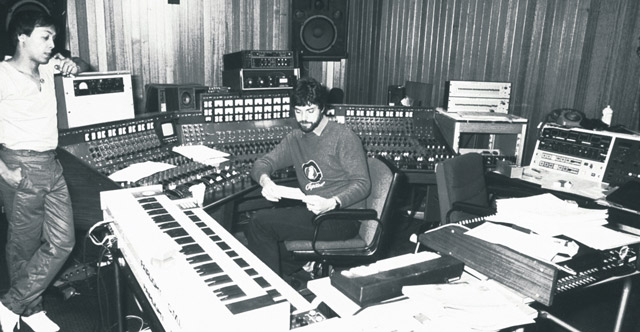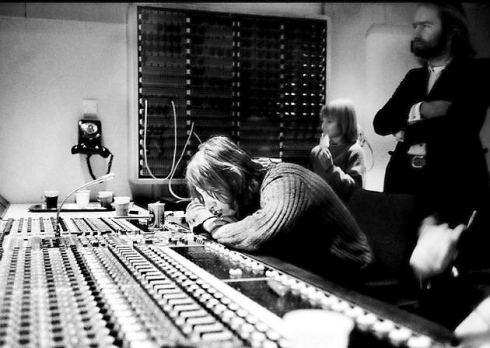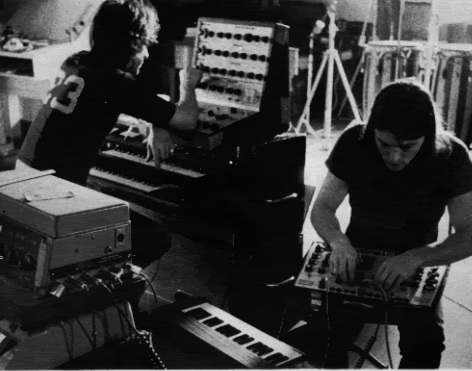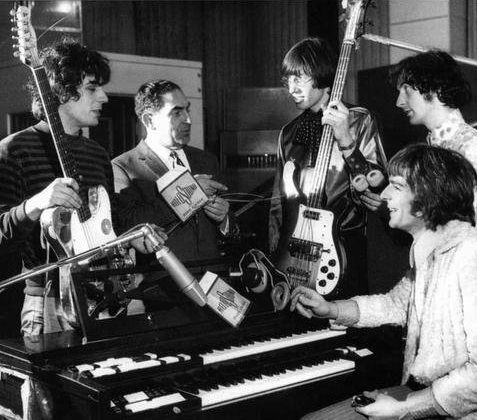Legendary Sounding Records: Myth vs Reality
The Aura Around “Perfectly Recorded” Albums
Ahhhhh, legendary sounding records.
How Industry Nostalgia Shapes Our Beliefs
Those records that everybody knows are the ultimate reference to ‘good sound’. Those discussed at pro audio conventions by distinguished gentlemen with even more distinguished pony tails. It is - for example - well understood that any Beatles record is the best sounding record ever. Period. Any one of them. Pick one. We are compelled to spend untold amounts of money buying the equipment that was reportedly used that make that magic happen (because it has to be the gear, right?).
Have You Actually Re-Listened Recently?
Have you listened to a Beatles album with ‘audio quality’ in mind recently? Ever? What do you remember?
Case Study 1: The Beatles - Let it Be
Does It Really Sound “Great”?
Take Let It Be, for example. Does it sound great? Please go listen now. (The Beatles were smart enough to not put their music on Spotify so you may be have to buy the track if you don't already own it. Darn, just when we thought music was free).
Listen here:
iTunes: https://itunes.apple.com/us/album/let-it-be/id401151866
The Shock of Modern Re-Listening
Did it sound different from what you expected? Remembered? A bit brighter maybe? Maybe the drums were not placed quite as you would think?
Case Study 2: Steely Dan - The AJA Obsession
AJA and the Legend of Flawless Engineering
Another much discussed artist is Steely Dan. Especially the AJA album. Endless discussions about the mastery of the engineering, the weeks spent getting tones, the relentless attention to details, etc, etc.... That one is on Spotify. Check it out.
Listen here:
iTunes: https://itunes.apple.com/us/album/aja/id64958
Spotify: https://play.spotify.com/album/51XjnQQ9SR8VSEpxPO9vrW
Where’s the Low End?
What did you think? Heard anything below 50 Hz? Not much right? Would that fly on one of your records? How about the drum sounds on Peg? How about you compare Black Cow and Peg?
Interesting no?
Separating “Great Song” from “Great Sound”
Evaluating Music in Its Historical Context
Maybe it’s important we should, in the spirit of getting better at what we do, practice dissociating a great song from the way it sounds. It’s very important to not forget to put the legends in perspective and consider when the records were made, in which conditions, how they affected the culture of their time and other things like that. Also, and primarily, we should learn to shape our own personal opinion about what what we think ‘sounds good’ and what does not.
Why You Must Build Your Own Taste
As an example, I personally think that the gentleman who designed the Beats by Dre headphones and myself would not be able to have a peaceful conversation about the subject matter. Just an example.
Case Study 3: Pink Floyd - The Dark Side of the Moon
The Most Worshipped Album of All Time
An album that is perennial number one on the charts of ‘it’s the best sounding record ever’ is ‘Dark Side Of the Moon’ by Pink Floyd which came out in 1973. Let’s take a look at it and see what is going on here.
Listen here:
iTunes:: https://itunes.apple.com/us/album/dark-side-moon-remastered/id700016575
Spotify: https://play.spotify.com/album/3cMpdE2Z4lKfVXJShcvBMW
*note: these are 'remastered' versions, which would be a separate ponytail chit-chat in itself.

How the Album Actually Begins
At the time pop bands actually took their time musically, they afforded themselves long intros and 7 min long songs and wild interludes. In kind, Dark Side starts with Speak to me which is not a song, features spoken word, a pre-show of the ‘Money’ machine sounds (shows the band’s understanding of a symphony’s overture concept, neat), some synth bass and an enormously fat heartbeat like bass drum that probably rattled everybody’s sound system at the time. There were no 808s in 1973.
Noise, Hiss, Buzz… and Why No One Cared
Speak To Me also feature a pretty healthy amount of hiss, right from the start of the song and a nice 60Hz buzz on the right side there for good measure. How does that buzz fit in your personal ‘good sounding’ book? Would you let that amount of noise slide on one of your projects? How about the buzz?

A Drum Sound Years Ahead of Its Time
What if, at the time, hiss on records was part of life and people thought nothing of it, but such a fat bass drum like sound was startling and made people want to listen to it over and over again? On Breathe (which by the way features a 1-minute-and-thirty-second intro for a 2 minute-and-30-second song) there is nicely thick-sounding relationship between bass drum and bass guitar. There is a certain presence and aesthetic in those drums that I believe was pretty ahead of its time for 1973.
Comparing 1972 Floyd vs 1973 Floyd
If you have ever listened to Pink Floyd’s previous album you won’t hear that kind of placement. You can listen to a few bars of Obscured by Clouds or When You’re In from the 1972 album (made just one year before Dark Side) and you’ll hear something that is closer to what was going on across the board in those days. One has drums panned hard left the other has the drums pretty far back. Burning Bridges has the quintessential early '70s bass drum. Lots of pock and not a lot of boom. Just one year passed. Someone, maybe Alan Parsons, decided during the Dark Side mix to push those drums up and manage to beat the system limitations of the time and make it fatter than usual. Whenever they could.

Not All Tracks Sound Like “Breathe”
Let’s go back to Dark Side. Most songs after Breathe go back to a thinner, more faraway style of drums except Any Colour You Like. Check it out. Do you like how the drums sound on Eclipse or Us And Them? Are those the best sound drums EVER? What do we tell the guy with the ponytail at the next NAMM or AES show? How do you feel about the difference in tone between Breathe or Any Colour You Like and the much brighter Time for example. (It’s ok to not listen to the whole song when the artist is not in the room, so unless David Gilmour is sitting with you, feel free to needle drop from song to song).
Asking the Forbidden Question
Ok, I’ll write it: there are many, many flaws in the sound of Dark Side of The Moon. So why the legendary status as to being ‘the best sounding record EVER, dude’ ? Good question. I think above all that at the time, this was incredible music. Check out what everyone else was doing at the time musically and sonically, sometimes in the same studio: the site BestEverAlbums.com has it for us

What Made Dark Side Revolutionary (Even If Flawed)
Sonic Innovations That Defined an Era
Pretty wild when listened back to back, isn’t it? With Dark Side, Pink Floyd invented 808-style boom before hip-hop, gave real presence to the drums whenever they could, featured arpeggiated modular synths before Jean Michel Jarre and sassy, smooth-jazz like saxophone solos over back beat music decades before smooth jazz.
Using Reverbs, Delays, and Found Sounds as Art
They used reverb and delays as a creative tool as opposed to recreating a missing space (check out the vocals or sax on Money), invented found-sound on pop records (cash machine on ‘Money’ again), used pans pots fly stuff around the stereo image without automation and many many more innovations that were very hard to achieve with the equipment of the times (try and setup and exact delay to tempo when it’s generated by a looped tape machine and send me a postcard).
Why Innovation Ages, Tastes Evolve, and Myths Form
It was trippy stuff, man. And new. And it sounded amazing for the times. But like everything new, it ages after a while. And other people catch up. And rip the ideas. And make them better. And the public consciousness evolves. And taste evolves. And equipment gets better..
Why “Best Sounding Ever” Is a Personal Illusion
The Danger of Stuck-in-Time Opinions
..but sometimes distinguished gentlemen with distinguished ponytails get a little stuck in the past. We are all guilty of that with some stuff. I bet you that my moma’s apple pie that she made when I was a kid sounds better than yours, for example. Pretty sure.
Your Taste Is the Only Truth
So there, in the end, it’s easy: whenever someone tells you something sounds good, better, best, or best-ever-dude, make a note to check it out for yourself before you add that to your knowledge base.
The Only Way to Learn Is to Listen for Yourself
What we do is based on taste. 100%. That’s how you form it.
Cheers,
Fab Dupont